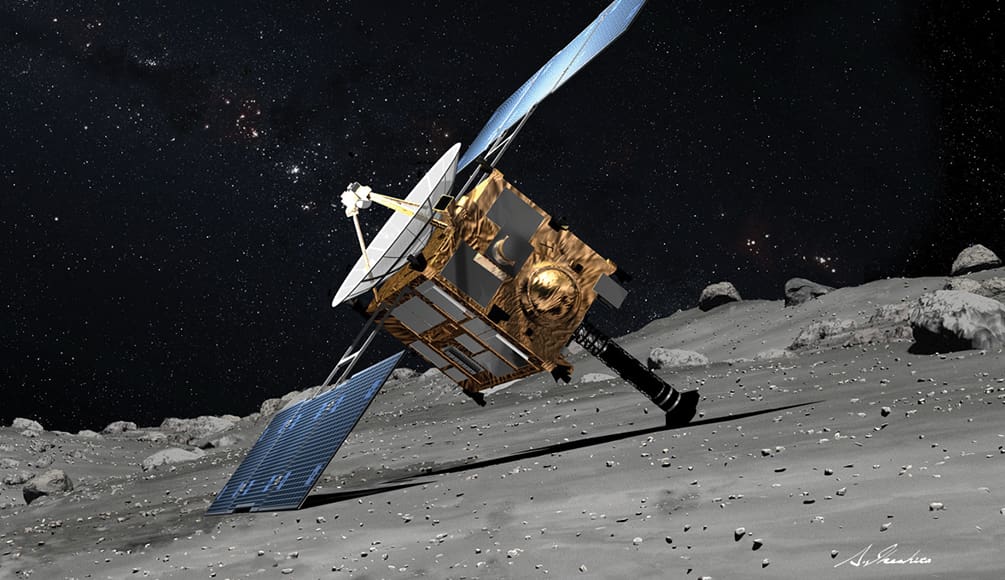The Space To Watch: Hayabusa-2
Operated by JAXA, Japan’s Hayabusa-2 spacecraft has been circling through empty space for the past four years. A lost, floating thing in the depths of the universe. “What was it looking for?” you may be asking.
Well, a tiny asteroid called Ryugu with the single purpose of collecting foreign materials from it to bring back down to earth. It is intended to survey the asteroid for 18 months, depart in December 2019, and return to Earth in December 2020. Sounds like a sci-fi film, eh? A little space ship picking up alien matter and returning it to earth where it will probably manifest into a whole new species of man-eating monsters! Sounds exciting!
Alas, back down on earth, the Hayabusa-2 is actually a successor to the original, Hayabusa. The original Hayabusa landed on an asteroid called Itokawa in 2004, successfully released its first payload and returned to earth. This was a major milestone for such a craft and was studied by teams at the University of Alabama. Next came the Hayabusa-2, which used the same mechanics of its predecessor, but on a bigger scale.
Ryugu is a C-type asteroid, which means it is rich in organic minerals. Studying what Ryugu is made from, helps scientists trace back to reveal other scientific findings. The spacecraft has gone on a journey of 3.2 billion kilometres since its launch and now it’s finally reached its target. It used explosives to propel a projectile into Ryugu, digging out fresh samples. It also has a ‘lander’ called MASCOT (Mobile Asteroid Surface Scout) and was built by the German Aerospace Center. After landing, MASCOT jumped around the asteroid, covering distances of up to 229 feet.

